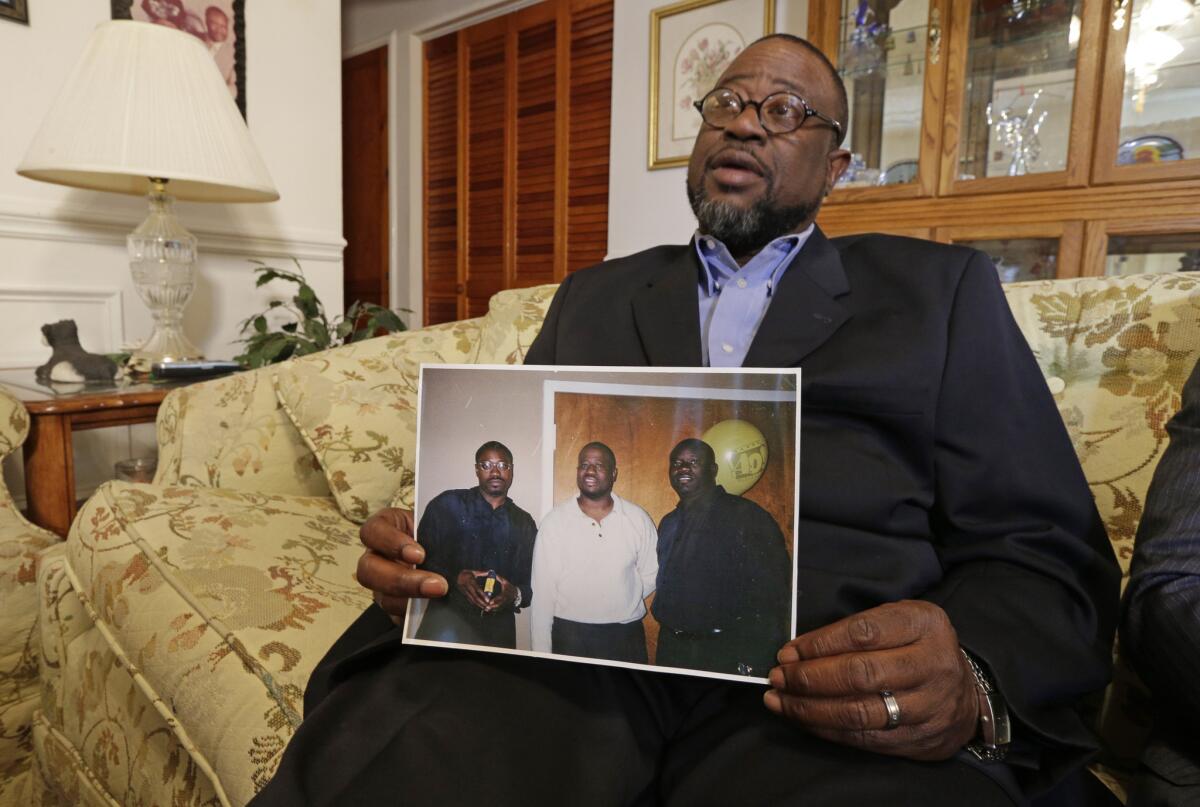Op-Ed: Video of Walter Scott killing is but a glimpse of police misconduct

- Share via
A generation ago, when someone complained of police misconduct, we would learn that a police spokesperson denied the accusation and that was that. Because we were not there and did not know those involved, it was impossible to draw any conclusions. There was also an understandable reluctance to believe that the local department would spread falsehoods. Now more and more incidents are captured in cellphone videos, and that means citizens can judge for themselves whether the police broke the law. Smartphones are providing us with a glimpse of the widespread abuse that policymakers have been ignoring for years.
On Saturday, April 4, Walter Scott was shot and killed by police officer Michael Slager in North Charleston, S.C. By Tuesday, local authorities had charged Slager with murder. That’s no wonder. Most of the episode was captured on a cellphone video that offers damning evidence of criminal conduct.
The first thing to note is that Scott was about 20 feet from Slager and was running away, not toward him.
To elude capture, lots of criminals run from the police. However, the Supreme Court has ruled that cops can only use deadly force against a fleeing suspect if that person poses a serious danger to the police or others. So, for example, if a criminal shoots at schoolchildren and then turns and runs in another direction, the police would be justified in firing their weapons. But a cop breaks the law if he shoots out of anger or frustration simply because his quarry is about to get away. And that’s what seems to have happened with Slager.
The video exposes additional incriminating evidence from after the shooting. After Scott falls to the ground, we see Slager tampering with evidence at the scene. It looks like Slager places his Taser close to Scott’s body. And, according to news reports, Slager wrote down that he performed CPR on the wounded Scott. The video clearly contradicts that claim.
Prosecutors typically give the benefit of any doubt to the police force. In this case the authorities must have realized that Slager lost all credibility with those dishonest actions.
To a certain extent, the authorities in South Carolina deserve praise for how they handled this incident. They disclosed the identity of the officer and his disciplinary record. They turned the case over to an independent agency to avoid a conflict of interest, and those investigators followed the evidence. Many people will say that the system “worked.” Did it?
Consider the role of happenstance in this case. A bystander with a smartphone — and the willingness to use it — happened to be on the scene to record it. There are very few instances in which video evidence is available. When it’s not, then all too often there is no serious scrutiny.
Vincent Bugliosi, the legendary Los Angeles prosecutor who put Charles Manson away, once admitted that most district attorneys have a double standard when it comes to filing criminal complaints against the police.
Bugliosi said the unit responsible for investigating officer-involved shootings reviewed hundreds of cases during the 1980s and did not find a single criminal violation. That pattern has held over time. Between 2001 and 2005, there were more than 400 officer-involved shootings reviewed by Los Angeles Dist. Atty. Steve Cooley. No criminal charges were filed.
In Milwaukee, prosecutors refer officer-involved shootings to an inquest jury, which can recommend or decline criminal charges. In 25 years, there has never been a recommendation for charges.
Since Ferguson, it has been repeatedly noted that we do not even have reliable data on the number of people killed by police each year. What we do know is that when the Department of Justice is called in to scrutinize police practices, the findings are deeply disturbing.
In 2011, the feds investigated the practices of the New Orleans Police Department. The findings were scandalous. According to the report, the local commanders’ mishandling of police shooting investigations was “so blatant and egregious that it appeared intentional in some respects.” Last year, the Department of Justice reviewed 20 officer-involved shootings resulting in fatalities in Albuquerque from 2009 to 2012 and concluded that most of those killings were illegal.
Policing in the United States is decentralized among thousands of cities and counties, so professional and ethical standards will vary. Still, it seems safe to say that too many officer-involved shootings receive little scrutiny.
What occurred in South Carolina was not an anomaly, it just happened to be caught on video.
Timothy Lynch is the director of the Cato Institute’s Project on Criminal Justice and blogs at policemisconduct.net.
Follow the Opinion section on Twitter @latimesopinion and Facebook
More to Read
A cure for the common opinion
Get thought-provoking perspectives with our weekly newsletter.
You may occasionally receive promotional content from the Los Angeles Times.









